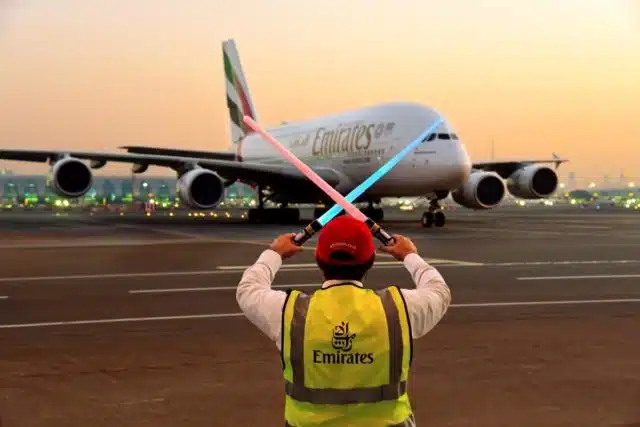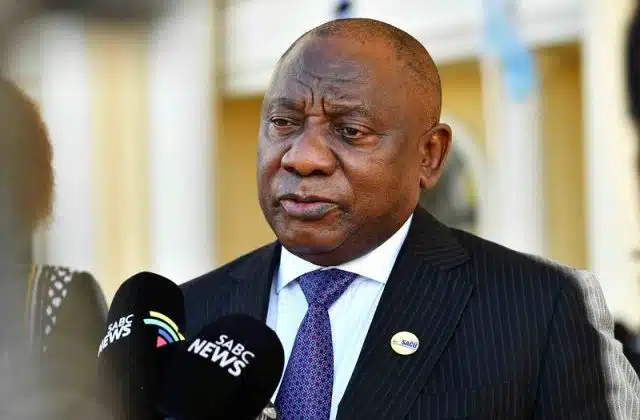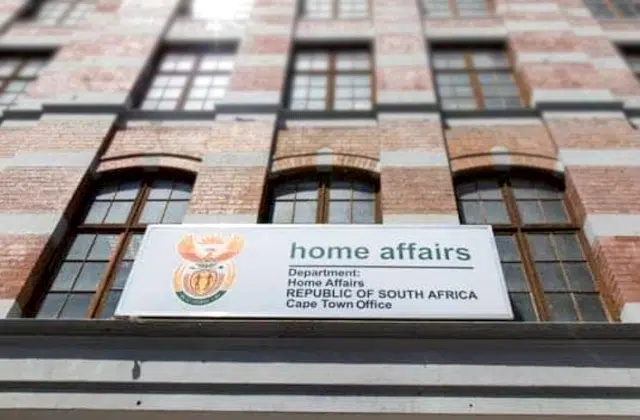
Emirates partners with South Africa as local airlines struggle
The minister of tourism, Lindiwe Sisulu, has announced a partnership with middle eastern airline Emirates as domestic flight capacity remains constrained.
At a media briefing on Thursday (1 September), Sisulu said that during a visit to Dubai, bilateral agreements were made with the middle-eastern airline to give it access to South Africa’s domestic routes while Emirates promotes South Africa abroad.
Sisulu said that government is in a code-sharing agreement with the airline and has since signed a memorandum of understanding (MoU) to grow the tourism market in South Africa.
The chief executive officer of Emirates, Ahmed Bin Saeed Al Makhtoum said that the airline’s long-term plan is to grow the tourism business and position the United Arab Emirates as a destination – rather than a hub dependent on passenger transit.
Sisulu said her department views the collaboration as critical in supporting our turnaround strategy and rebuilding trust in travel to the ‘Global South.’
She added that it expects this partnership to boost visitor arrivals and promote tourism and inbound traffic to South Africa from key markets across the Emirates network.
Under the MoU, Emirates will explore opportunities to promote South Africa and encourage travellers to experience the abundance of attractions that the country has to offer across its network of over 130 destinations.
The South Africa Tourism Board, meanwhile, will work with the airline to support travel trade partners and tour operators across the Emirates’ network to develop and promote itineraries, introduce special packages and promotional giveaways, encourage incentives, among other marketing initiatives.
According to Emirates, the airline currently serves South Africa with 26 weekly flights, including double daily services to Johannesburg, daily services to Cape Town and five weekly flights to Durban.
Customers can also access popular regional destinations across South Africa via the airline’s codeshare agreements with South African Airways and Airlink, and interline agreements with FlySafair and Cemair.
Examples of these route options include Bloemfontein, Hoedspruit, Port Elizabeth, Kimberley, George, and East London, amongst others.
Domestic failings
The department of tourism said that while there had been a global increase in seat capacity, the capacity in South Africa still only makes up roughly 61% of pre-pandemic levels.
The cost of getting a seat has sky-rocketed while seat availability has also become constrained. For example, Airlink, the current largest domestic airline in South Africa, has seen its fares hike up by 7%, said Sisulu.
This follows a major blow to the airline industry when British Airways and Kulula operator Comair went into business rescue and subsequently liquidated – leaving South Africa with 40% less seat capacity.
In the earlier part of August, Sisulu met with the Airlines Association of Southern Africa (AASA) following reports relating to shortages of airline seats and the rising cost of flight tickets.
She said that the failings of domestic airlines affect the tourism industry directly – and the tourism industry is eager to help.
“AASA shared with us that the airline industry is cash intensive, where a lot of investment is made up front. Given that the most important investment airlines have made towards people and skills, the airlines were determined to do whatever is possible to defend the gains they’ve made in people, which investment has ensured that South Africa is ranked among the safest in global aviation,” said the department.



